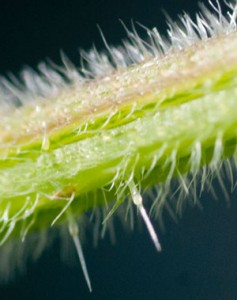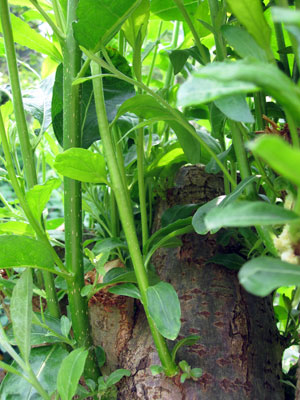Rope and Cordage

During man's history, rope and cordage has been made from numerous materials.Obviously the first materials used were natural materials such as bramble, nettle, flax, sisal, hemp, jute, manila, cotton, coir various tree barks or bast, various grasses and straws etc. Sometimes the leaves would be used, sometimes the stems or even the roots and bark of trees or other plants. Some animal skins, hairs & sinew have also been used. The material would be chosen because it was available locally or because of specific characteristics, ie strength, suppleness, buoyancy, elasticity, etc.
In more recent times the development of rope has progressed to new heights. Metal, plastic, polyester, nylon, kevlar, vectran, dyneema, rubber, solid core and composite ropes are now common place. Some of these are designed for specific applications with very high and specific tolerances such as for suspension bridges, marine use, climbing or lifting. Construction methods have also developed from the basic 2, 3 or 4 ply strand ropes and plaits, to braid on braid, kernmantle and composite material ropes to produce ropes with much higher tolerances and consistency.
 In a typical English woodland you’ll find many native trees and plants suitable for rope and cordage. Various nettles, brambles and grasses can all be found in the herb layer. For speed of use, whole wood stems can be used wound into withies out of hazel, willow, birch, elm, poplar, ash or any other tree that produces long thin pliable stems. But you can also use a wide range of barks or inner bark (known as bast). These can produce very high quality fibres but they do require some preparation. Retting, smoking, beating, boiling and heating are among the common methods used. Lime bast produces the strongest wood fibres and was largely used throughout
In a typical English woodland you’ll find many native trees and plants suitable for rope and cordage. Various nettles, brambles and grasses can all be found in the herb layer. For speed of use, whole wood stems can be used wound into withies out of hazel, willow, birch, elm, poplar, ash or any other tree that produces long thin pliable stems. But you can also use a wide range of barks or inner bark (known as bast). These can produce very high quality fibres but they do require some preparation. Retting, smoking, beating, boiling and heating are among the common methods used. Lime bast produces the strongest wood fibres and was largely used throughout
Europe right up until the late Medieval period when hemp finally became more widely available. Oak, willow and elm were also commonly used in the past.
If you’d like to learn more about primitive rope and cordage, why not come on a course and learn how to make your own. I also run many other courses throughout the year in woodland crafts and primitive technologies.
Alan Sage
Alan runs a variety of interesting courses on woodland crafts and primitive technologies at locations in Kent and Sussex, including one on rope and cordage (12th July 2008), and offers a range of woodland products made from sustainable sources. Visit his website at www.ajscrafts.co.uk for more details.
Comments are closed for this post.

Alan is also leading our next SWOG (Small Woodland Owners) meeting at PLumpton college on the 19th July. He will be looking at woodland management.
If you are interested, take a look at our website
http://www.woodlands.co.uk/swog
Tracy
Tracy Pepler
14 June, 2008